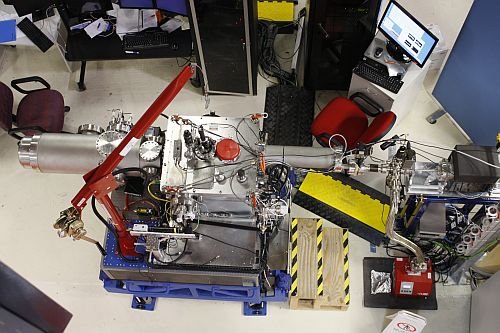A new branchline being commissioned on the soft x-ray beamline to demonstrate new techniques and capabilities is a collaborative project by several research groups with federal government funding.
 “The soft x-ray branchline is a development instrument that will enable users to explore some really high-impact science”, said the Synchrotron’s Director, Professor Andrew Peele.
“The soft x-ray branchline is a development instrument that will enable users to explore some really high-impact science”, said the Synchrotron’s Director, Professor Andrew Peele.
The new branchline brings a capability in coherent diffractive imaging (CDI) and will demonstrate it in the ‘water window’, that is, using x-ray wavelengths that are absorbed by nitrogen and other elements found in biological materials, but not by water. CDI imaging techniques such as ptychography use x-ray diffraction patterns to recreate micro- and nanoscale structures with high spatial resolution. CDI techniques do not require lenses to form images, and are therefore not limited by lens resolution or manufacturing quality.
The ARC Centre of Excellence for Coherent X-ray Science is the key force behind the development of the soft x-ray branchline, in collaboration with researchers from seven Australian universities and funding from the federal government’s Linkage, Infrastructure, Equipment and Facilities scheme. The equipment for the branchline was developed by Australian researchers at the Advanced Photon Source at Argonne National Laboratory in the USA and has now been relocated to the Australian Synchrotron.
 For the present the priority will be to develop CDI. However, the set-up for the technique of CDI has much in common with scanning transmission x-ray microscopy and there are hopes that the beamline will be used to showcase capabilities in this technique as well.
For the present the priority will be to develop CDI. However, the set-up for the technique of CDI has much in common with scanning transmission x-ray microscopy and there are hopes that the beamline will be used to showcase capabilities in this technique as well.
“Projects for CDI will be selected on a merit basis in competition with other submissions for soft x-ray beamtime,” Professor Peele added, “with support provided by the development group in collaboration with the Australian Synchrotron”.
